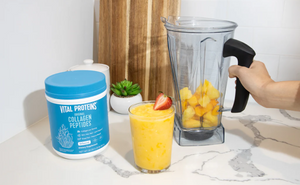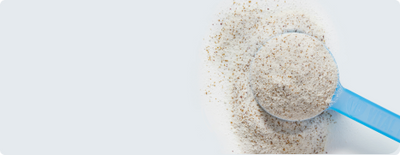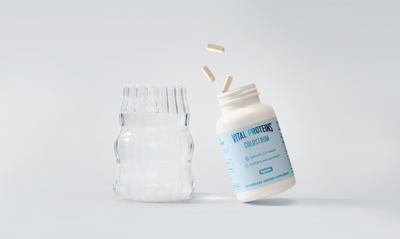There are many ways to tackle your fitness goals. You could use calisthenics, for instance, which is when you rely on your own bodyweight. Or you could go the route of supersets, which is when you pair exercises in sets for a time-efficient workout.
Another way to crush those goals and increase muscle mass (hypertrophy) is by pairing muscle groups together.
"Manipulating what muscle groups you train and how often in a workout split will help you optimize your training, in accordance with your goals," says Ria Patag, Founder of Bolt Active.
Which muscle groups work together? Read on to find out — with help from fitness experts.
Vital Note: This article has been made available for informational and educational purposes only. It is not intended to be a substitute for professional medical advice, diagnosis, or treatment. Always seek the advice of your physician or another qualified health provider with any questions you may have regarding a medical condition. Your licensed healthcare professional can best provide you with the diagnosis and treatment of any medical condition and assist you as well in deciding whether a dietary supplement will be a helpful addition to your regimen.

What muscle groups should be worked out together?
Just like Vital Performance™ PRE and workouts pair so well together, so do certain muscle groups. Josh Smith, CPT, WLS, points out that this mainly depends on goal and function.
The chest and triceps, for example, work well together "because the triceps assist on the bench press," Smith tells Lively. "You get equal results in reverse. The shoulders are active on the chest press as well."
Another perfect pairing is a workout that works movements instead of specific muscle groups. "Pairing movements based on movement helps to better split up programs to make it easier for other variables," explains Smith, who adds that these variables include time to train and workout frequency.
The most popular combination of movement is push, pull and legs. Patag explains to Lively that push movements involve chest, shoulders and triceps while pull movements involve the back and biceps. Legs are pretty self-explanatory: You tackle the major leg muscles, including the glutes, hamstrings, calves and quads.
Finally, you'll never want to leave core exercises out after reading this next bit of information. Sergio Pedemonte, a certified personal trainer and the CEO of Your House Fitness, says that the core is the most versatile muscle group there is — and one that should almost always be incorporated into combinations of working muscle groups.
As a bonus, your core is active during most every exercise you do, and you can thank its stabilizing powers for that. The "best combination of muscle groups that should be worked together are muscles that stabilize the joint and work off of the joint that is being stabilized," Pedemonte says. So, what's the one muscle group that stabilizes all other joints in the body? You guessed it — the core.
What body parts are important to work on what days?
With the goal of getting the most out of your workouts, Smith suggests a workout split that is close to the one below. It's aimed at hitting each muscle group at least once.
- Monday - Chest/Triceps
- Tuesday - Back/Biceps
- Wednesday - Active Rest (stretching, light cardio)
- Thursday - Shoulders and Core
- Friday – Legs
- Saturday – Arms
- Sunday – Rest
"The days are structured so that there is enough time for rest and recovery, and the arms are fully recovered by day 6 to train them again," Smith explains.
If you're going to do heavy lower back intensive exercises, such as deadlifts or squats, Pedemonte suggests switching days around so that there is at least 2 to 3 days in between them. "These exercises are very taxing on the central nervous system and if overdone these exercises have a high propensity for injury," he explains.
You should also consider doing larger compound movements first before smaller isolation exercises. "This is because if we train the smaller muscles first, they will limit how much exercise intensity can be used during the bigger main movements," Pedemonte tells Lively.

Which body parts are best to train together?
Even your muscles need a gym buddy. For starters, Pedemonte believes in this trifecta: training the shoulder, lower traps/rhomboids and triceps. This trifecta "can help stabilize the shoulder joint, scapula and elbow joint when training heavier chest exercises like the bench press," he says. "Having more body awareness and blood surrounding the elbow and shoulder joint may also help improve pressing form and reduce injury risk."
This same idea of blood around the joints and improved body awareness also applies to the lower body. "When preparing for squats, warming up the calves, glutes, hamstrings and quadriceps muscles can greatly reduce injury risk and may aid in strength gains as the form improves," Pedemonte says.
Lastly, you can't knock the full-body workout. (It's tried and true for a reason).
"A well-structured exercise program will train both upper body and lower body in the same workout," says Colin Laughlin, Owner/Head Trainer of QualityLife Fitness.
Is chest and biceps a good combo?
You usually hear about working chest and triceps together, but what about chest and biceps? The short answer is kind of.
"Chest and biceps are not a bad combination, but it could leave you with bad posture after because both bicep and chest training may lead to a rounded shoulder and upper back position," Pedemonte tells Lively.
But you should take what body parts you plan to work on what days into consideration. "The main consideration with this setup is being aware of what day the back would be trained and making sure it's not too close to the workout with this pairing," Smith says.
In other words, you don’t want to overwork the muscle since he shares that the biceps are involved in most movements targeting the lats. For an optimal chest and biceps combo, Pedemonte notes that it might be a good idea to balance this training with exercises that use muscles that open the chest and shoulders, such as the rhomboids and the triceps.
For example, "dumbbell triceps kickbacks, if done correctly by retracting and depressing the scapula as the triceps extend, can be a great supplement to chest training as it promotes an open chest position."













